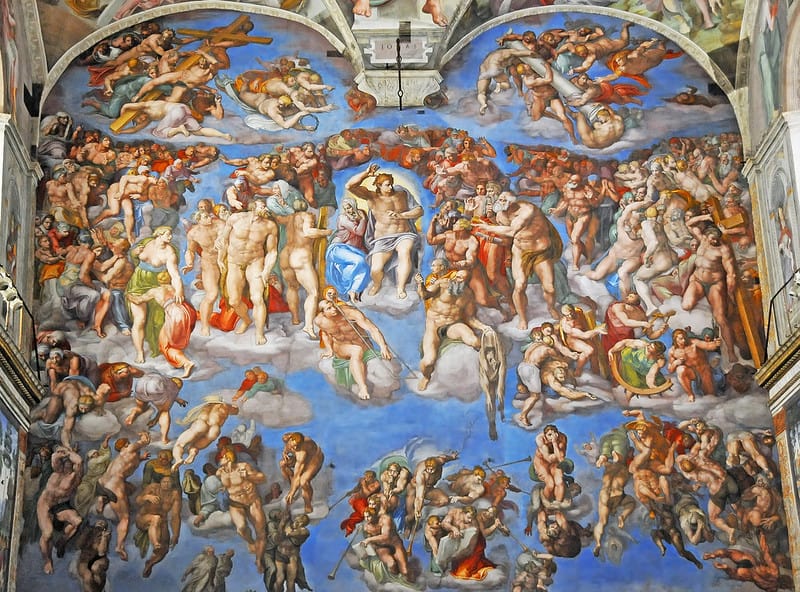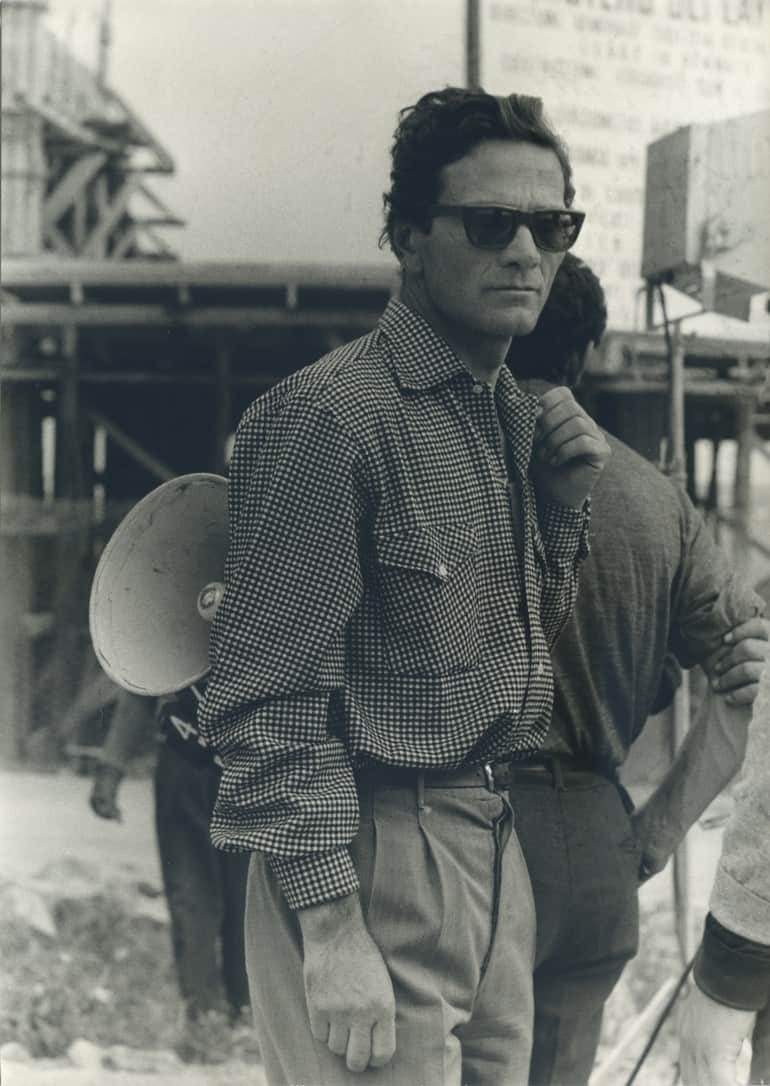
Rome: a home to the eclectic and profound artist, Pier Paolo Pasolini
On November 2nd 1975, the body of Pier Paolo Pasolini, poet, writer, film director and one of Italy’s leading intellectuals was found in Ostia. On the evening of his death, Pasolini had dined with actor Ninetto Davoli and his family at trattoria Pommidoro in the neighbourhood of San Lorenzo. That evening he had appeared gloomy, disheartened and in a bad mood.
Pasolini had made many enemies: he had condemned Italy’s political class for its corruption and collusion with the mafia. Pasolini’s death was convenient for many who were afraid of his mind and ideas.
It is not until someone dies that you really know who they are. Pier Paolo Pasolini
Luckily, despite his death, Pasolini still wanders the streets of Rome, that 47 years after his death still shout his name, ideals and inherent genius.

One of Pasolini’s preferred neighborhoods for filming and spending personal time was Pigneto. Here Pasolini pops up time and again in some of Rome’s best street art. In Via Fanfulla da Lodi you’ll find three murals all dedicated to him. The mural by Ominio 71, called Io so i nomi (I know the names), gets its title from the well-known quotation in an article by Pasolini written during the years of terrorism in Italy. In this work, Pasolini is represented as a superhero, bravely fighting against the political system.

Just a few meters forward, Pasolini’s eyes, painted in black and white, gaze over Pigneto. This work by Mauro Pallotta, aka Maupal is titled L’occhio e’ l’unico che puo’ accorgersi della bellezza (only the eye can see beatury) taken from a poem written by Pasolini. Just in front of this haunting mural, there is another work by Mr Klevra inspired by Pasolini’s film Il Vangelo Secondo Matteo (The gospel according to Matthew). The mural is a close-up of Margherita Caruso, the actress who played the role of the Virgin Mary in the movie.
In Pigneto you’ll discover another diverse part of Rome where locals go about their daily life, working, eating, drinking and raising their families, very different from the center of the ancient city. The neighborhood is bright, open and filled with relatively new apartments buildings and small homes with private gardens. While you are there make your way to one of Pasolini’s favorite spots, Necci dal 1924 (Via Fanfulla da Lodi, 68) which still remains the go-to place for the artists of Pigneto. Here you can dine in the outdoor garden, beautifully shaded by the trees that surround the space, or on a colder day take a seat inside and cosy up with a nice book while sipping your coffee or glass of wine.

Another neighborhood loved by Pasolini, where he often searched for the most authentic Roman faces to feature in his films is Tor Pignattara. On Via dell’Acqua Bulicante, 121 you’ll encounter the work of street artist Diavù. His mural features portrait of four movie stars, Pasolini being one of them.

On Via Galeazzo Alessi, 215 you will find another huge mural by Nicola Verlato, an Italian artist living in LA, which depicts the descent of Pasolini’s body at the moment of his death. At the top is his killer while at the bottom young Pasolini is on his mother’s lap, encircled by the Italian poet Petrarch and his mentor Ezra Pound. The work which was originally titled Hostia by the painter has been renamed The Sistine Chapel of Tor Pignattara by locals.
While you’re in the area, eat at Osteria Bonelli (Viale dell’ Acquedotto Alessandrino, 172/174) for an authentic, unpretentious dining experience just like in the days of Pasolini. Reservations recommended.

If you are willing to venture further, head to Ostia. The city not only served as the setting in a Pasolini film, but it also sadly became the ground on which his murder took place. Near the exact spot there is a school named after him, and inside the school there is a mural by Maupal. Outside, there is another street piece by Omino 71 and Mr.Klevra; the artists collaborated with one another, each painting part of the work. On the left of it a quote by Pasolini is written: “chi si scandalizza è sempre banale” (who gets scandalised is for ever trivial).
Perhaps the best place to have a pasta dish on this visit to Ostia would be Ristorante Monumento (Piazza Umberto, 18). This historical restaurant started in the 19th century and catered to the men that were working on the local marshlands; it is the favorite of sightseers who crave a homemade dish of pasta with excellent seafood.
What we remember about Pier Paolo Pasolini was his willingness throughout his life to search for the truth. Looking at the current state of affairs, one cannot help but think of Pasolini and remember the crucial importance of fighting and searching for the truth and equality in the world around us.

Four major museums celebrating the artist’s 100th anniversary
This year, Pier Paolo Pasolini, born in 1922 would have been 100. For the occasion, the whole city, which has been a home to the poet, as well as tragically his deathbed, will pay homage to his art and genius with four dedicated exhibitions. Three connected ones by the theme TUTTO È SANTO (everything is sacred) and one dedicated to the artist’s work as a painter.
TUTTO È SANTO – IL CORPO POETICO
Till February 26, 2023
Palazzo delle Esposizioni – Via Nazionale, 194
Tue-Sun 10am-8pm
Entry fee: € 8-10
palazzoesposizioni.it
The exhibition sets out to explore the figure of Pasolini in his radical dimension as an author, formed around his extreme love for life and reality and opposition to the subjugation of bodies, even before that of minds, to conventions and homologising normalisations. The exhibition presents exclusively original materials, to emphasise the “corporeity” of the objects: vintage photographs, period newspapers, first editions of books, magazines in which interviews, articles and speeches appeared for the first time, and then costumes, typescripts, cyclostats, as well as films, records and tapes. The artist’s celebration of diversity and anarchic thought takes shape through 700 pieces, spread across 7 fundamental themes.
read moreTUTTO È SANTO – IL CORPO VEGGENTE
Till February 12, 2023
Palazzo Barberini – Via delle Quattro Fontane, 13
Tue-Sun 10am-7pm
Entry fee: € 12
barberinicorsini.org
The National Galleries’ exhibition explores the decisive role of artistic tradition in Pasolini’s cinema: from the Primitives to the Baroque, from the hieratic archaism of painters like Giotto, to the subversive realism of Caravaggio. Transformed by Pasolini’s poetic lens, this fundamental imagery resists as witnesses of the sacred and at the same time mundane mystery of our relationship with reality and history. The exhibition’s itinerary, conceived as a “montage”, illustrates the survival of such imagery through Pasolini’s work.
TUTTO È SANTO – IL CORPO POLITICO
From November 16
MAXXI – Via Guido Reni, 4a
Tue-Sun 11am-7pm
Entry fee: € 12,00
maxxi.art
The acute observation of power dynamics, the effects of massive media consumption on the public and the voice of the artist as an act of protest and prophecy are some of the themes that articulate the sections designed for the exhibition. At MAXXI, the politics integral to Pasolini’s thought and art are rendered though the works of several artists attentive to the painter’s devotion to a politics from below and a constant interrogation of and doubt about the heroism of the rational subject of a secular, bourgeois, neo-capitalist world.
read morePASOLINI PITTORE
Till April 16, 2023
Galleria d’Arte Moderna – Via Francesco Crispi, 24
Tue- Sun 10am-6.30pm
Entry fee: € 6,5-7,5
galleriaartemodernaroma.it
Pasolini Pittore is an exhibition that brings attention to an often-overlooked aspect of the great Pier Paolo Pasolini’s art: painting. The exhibition showcases Pasolini’s first paintings and drawings, his portraits, still-life and landscapes with their intimate aura, the famous series of young boys, portrayed whilst seated, laying down, and with flowers. Plus, an important section will be devoted to the artist’s self-portraits, those of his family and friends. Finally, an area will be dedicated to early 1940s Bologna, the painter’s birthplace, specifically to drawings by Pasolini and artist and playwright, Fabio Mauri – with whom Pasolini developed a deep friendship underpinned by a continuous exchange of insights.
read more










